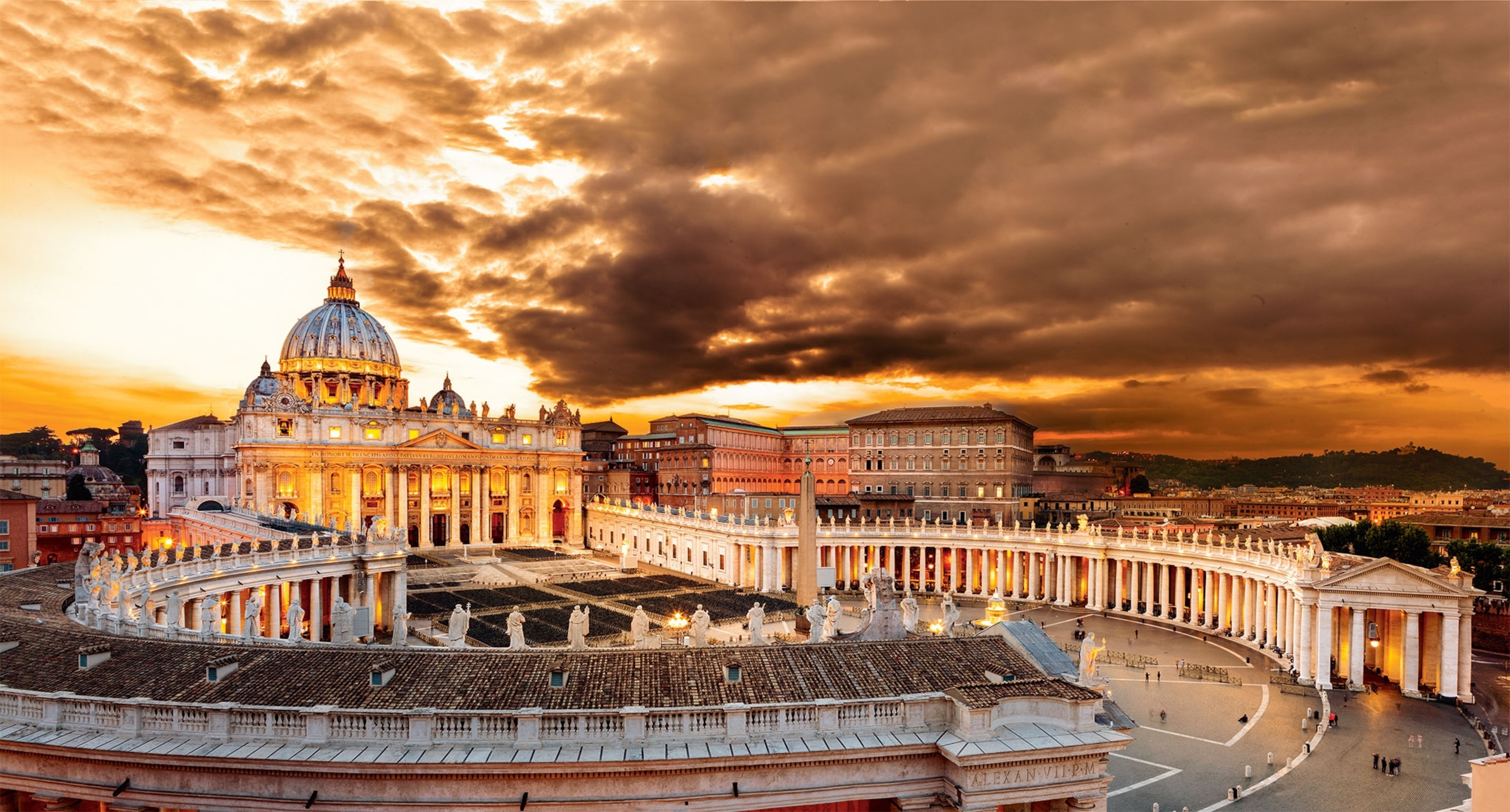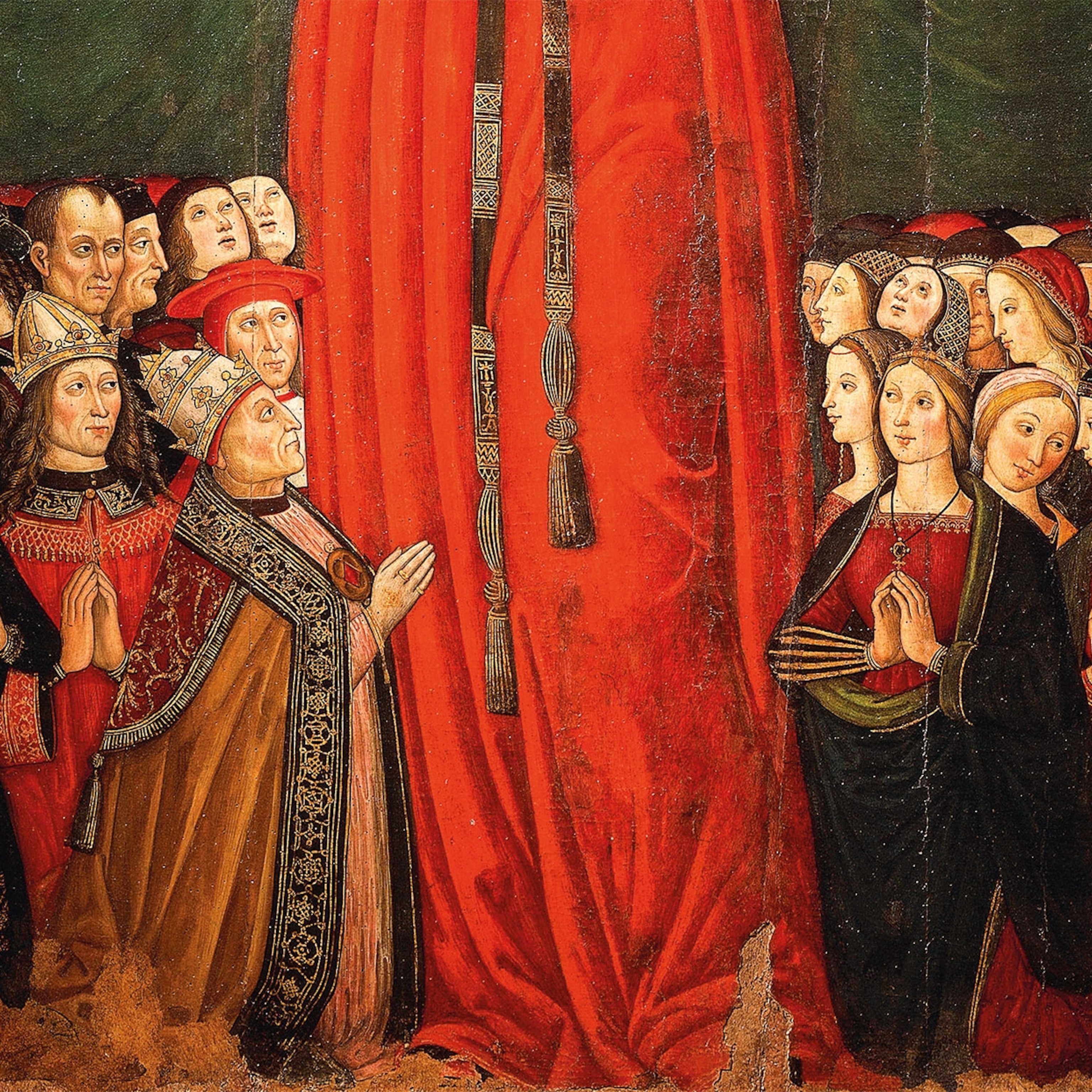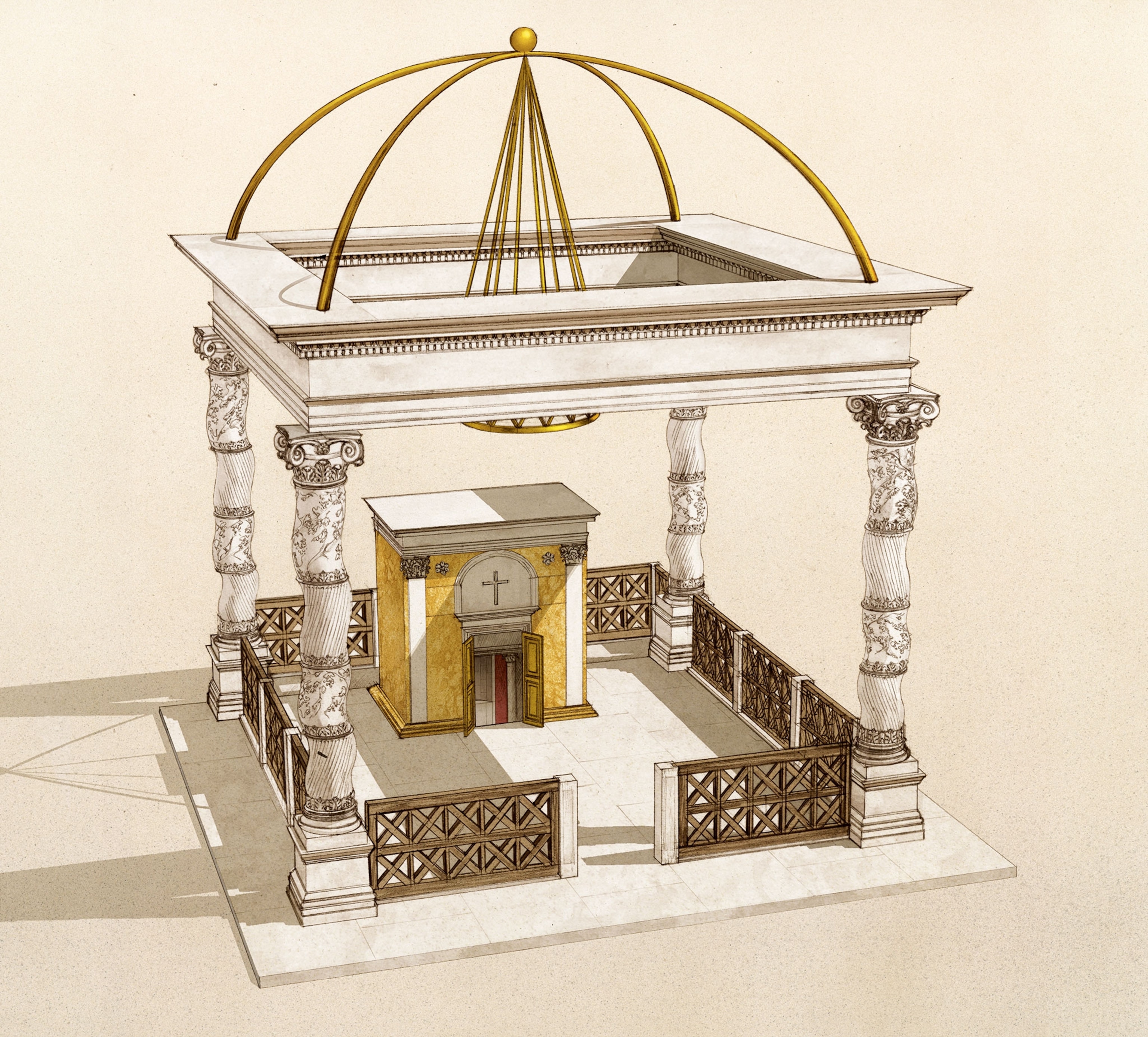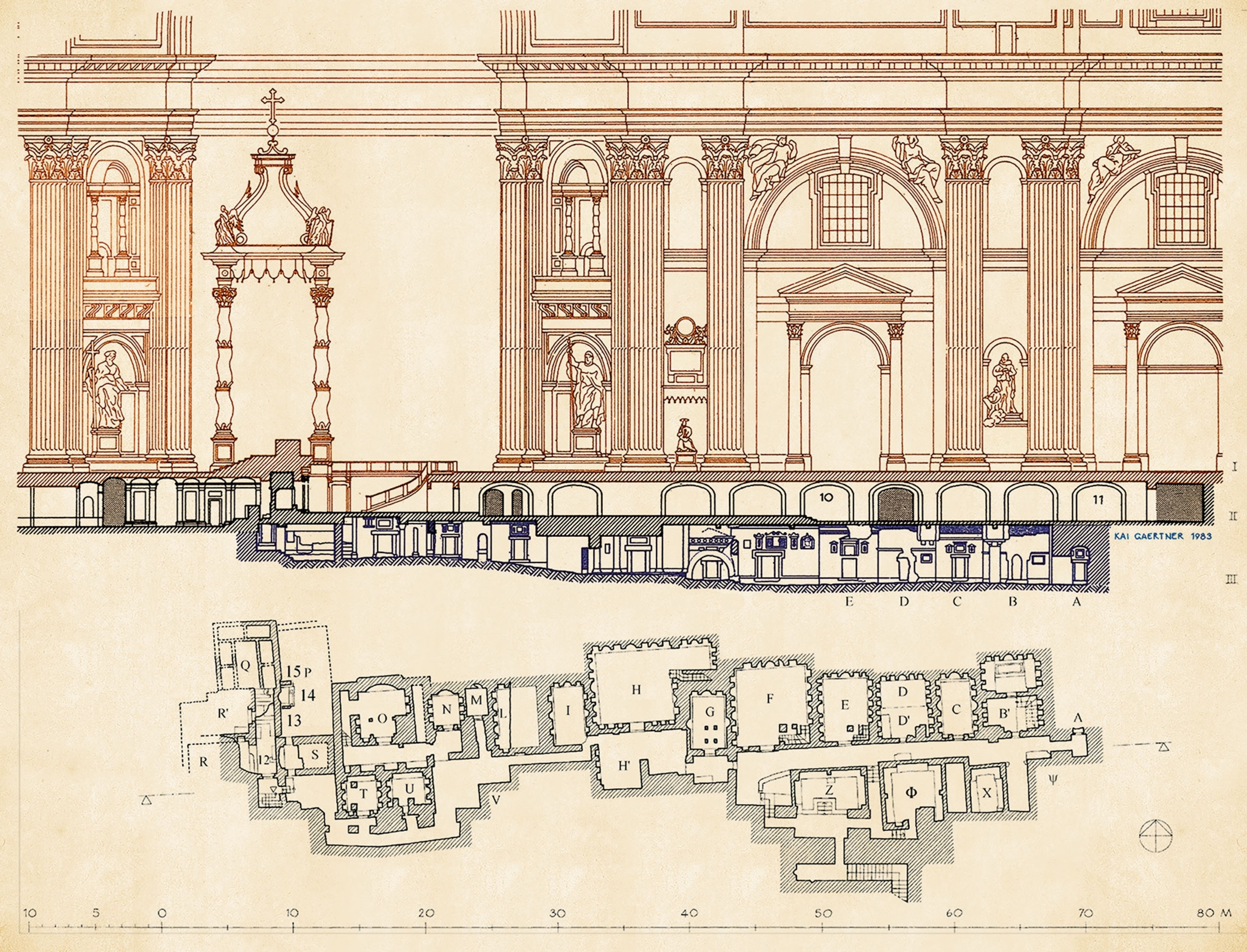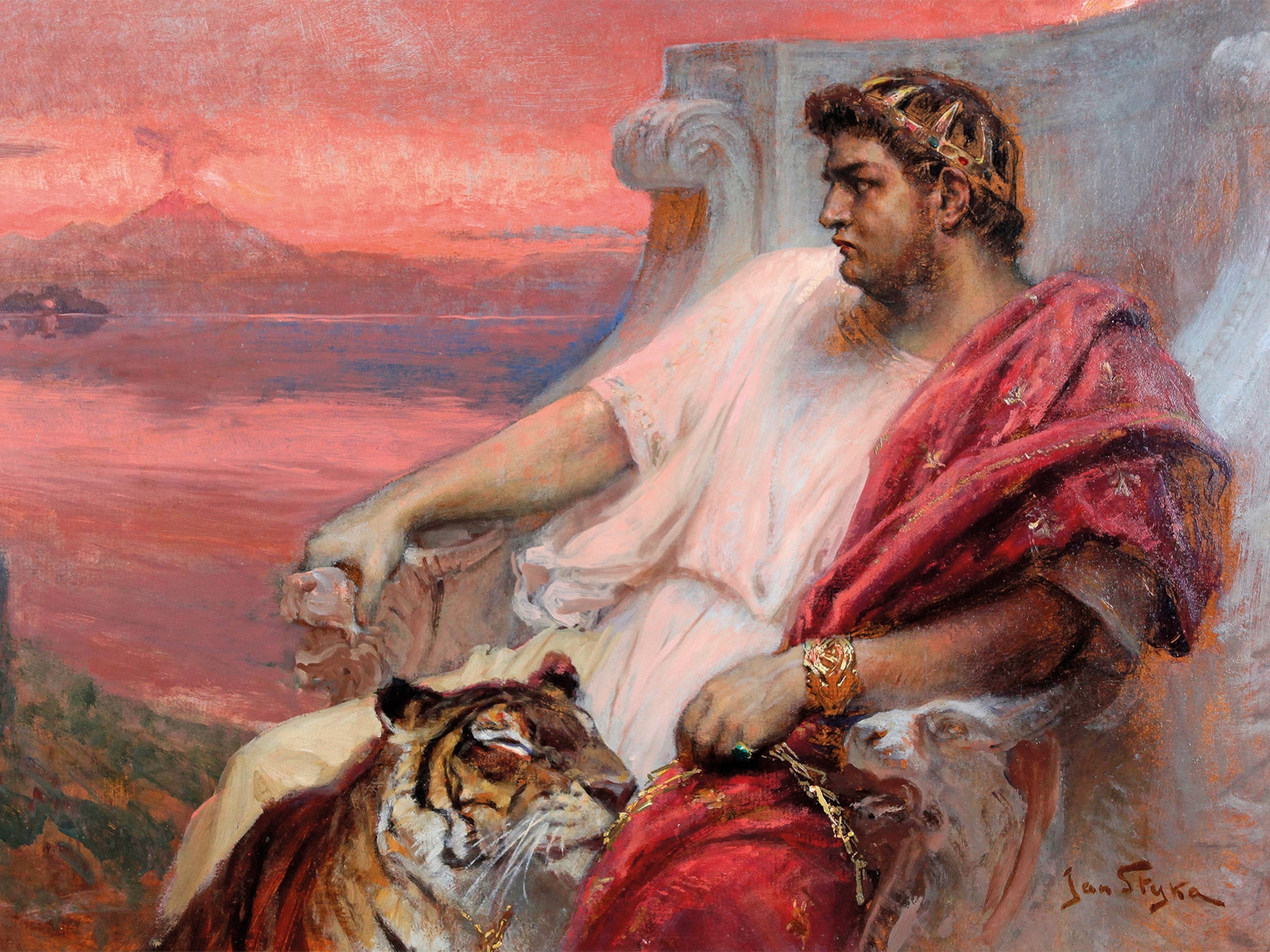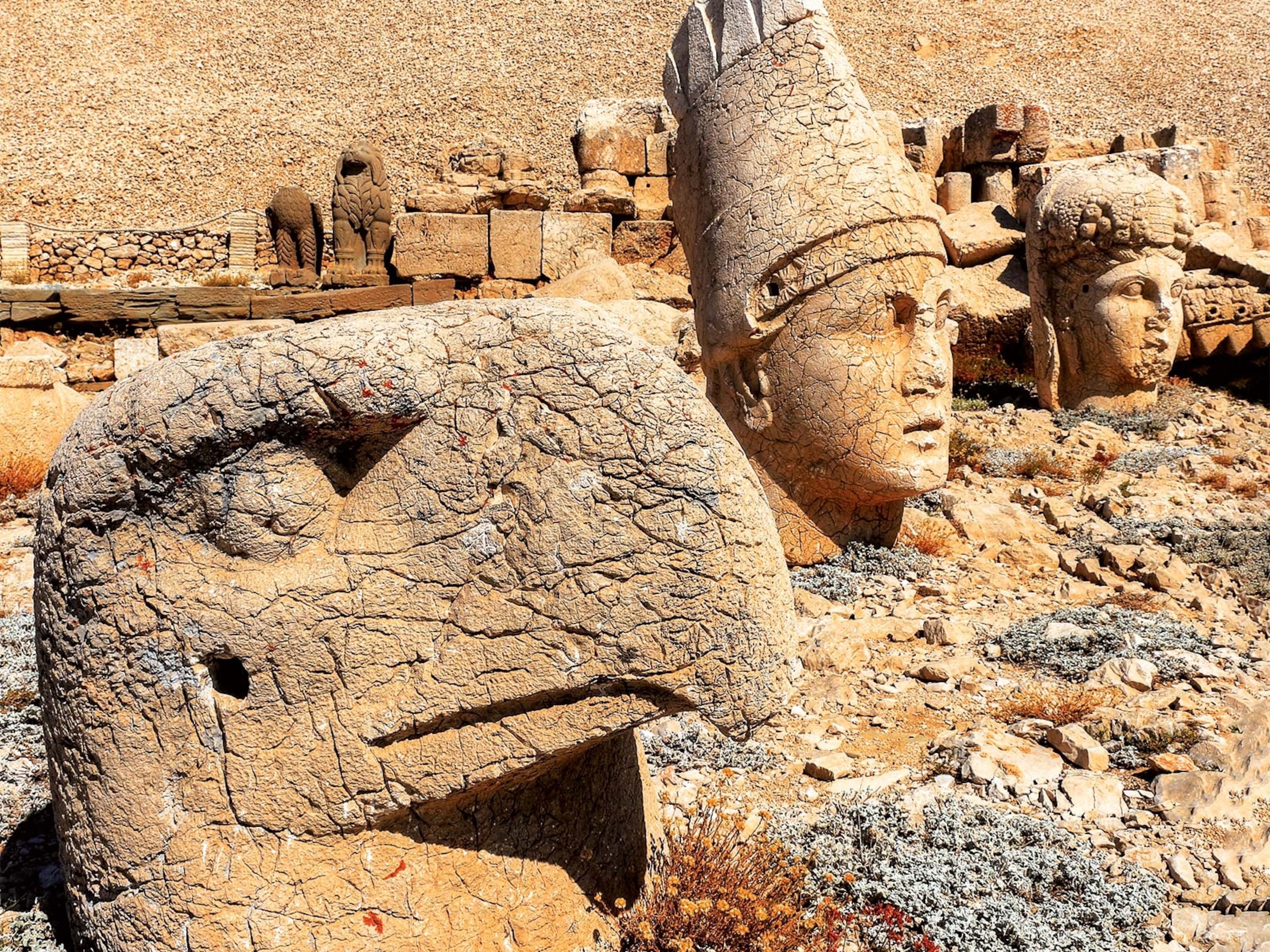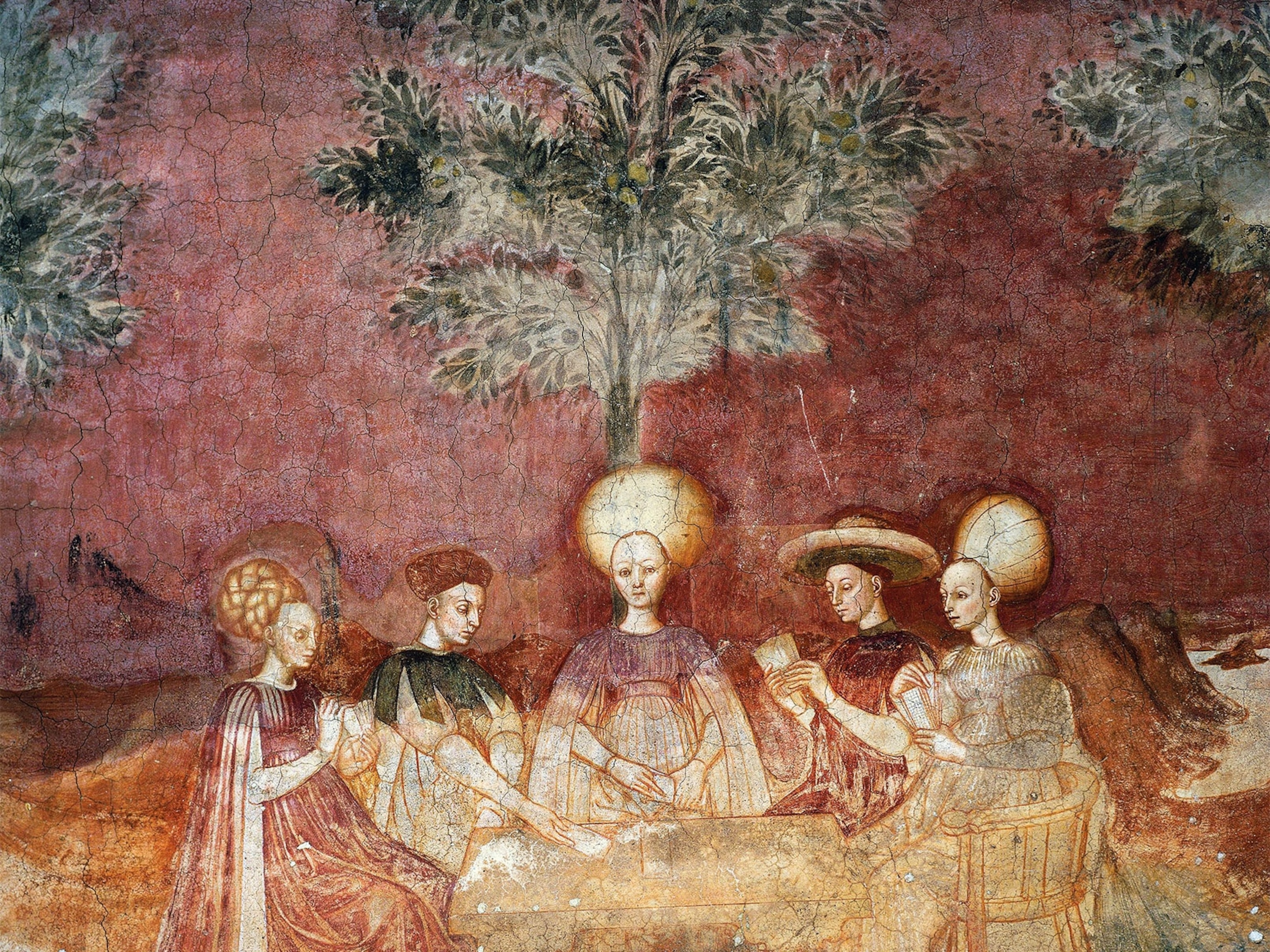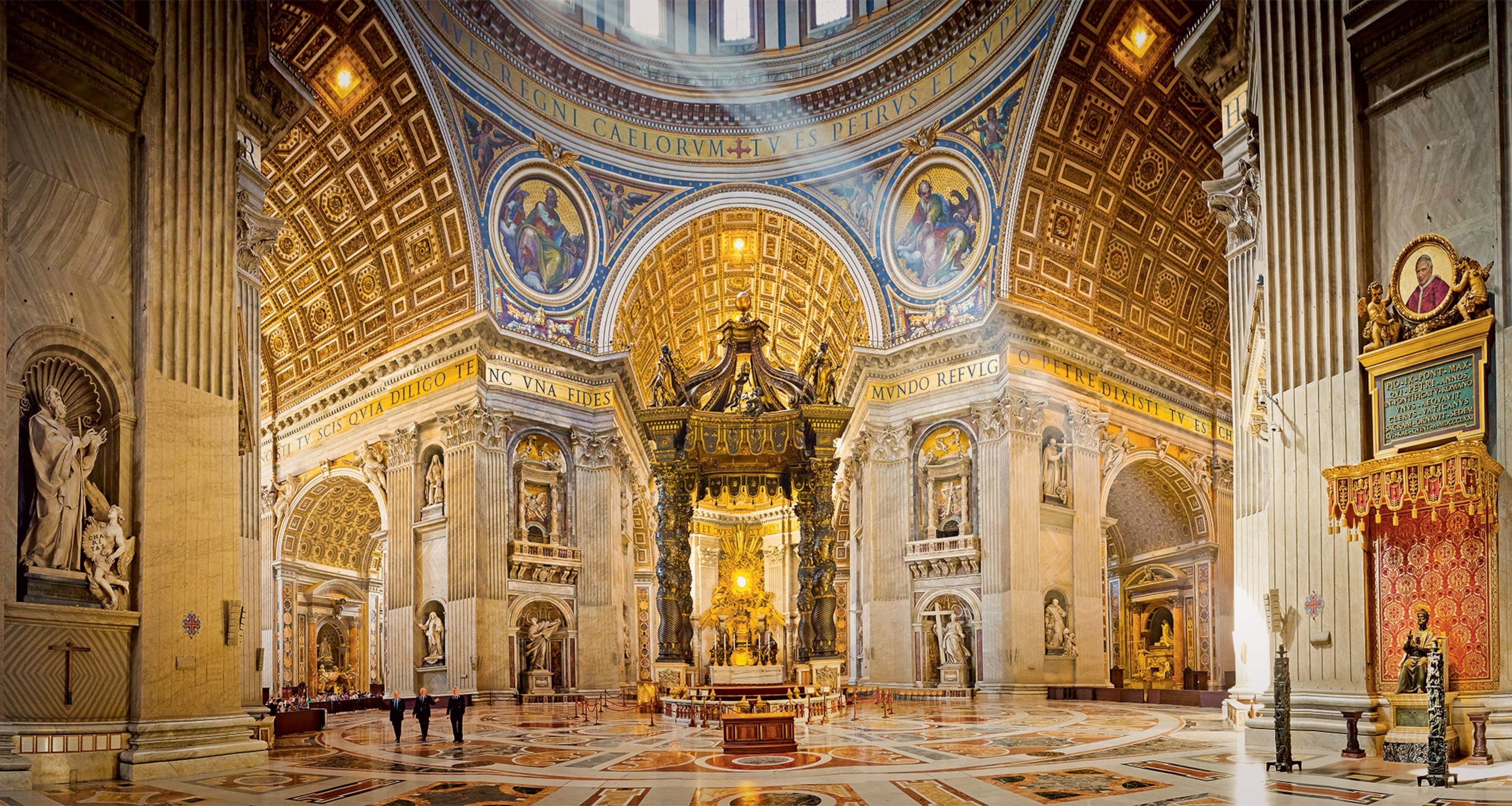
St. Peter's Basilica contains his tomb... right? Why there's still some doubt
Some believe the basilica on Vatican Hill was built over the martyred bones of the apostle Peter—but is that true? After excavations and forensic analysis, the Vatican says they reached a conclusion, but some scholars aren't sure.
According to church history, the apostles Peter and Paul arrived in Rome at the time of Nero (r. A.D. 54–68). There they found a small but committed group of Christians established among the Jewish communities of the city. On Saturdays, Peter and Paul would visit the synagogues, and on Sundays they preached in various homes around the city that doubled as churches. But this way of life was interrupted by the infamous Great Fire of Rome in A.D. 64, which Nero accused the Christians of starting. The emperor had many Christians condemned to death for the blaze. They were executed by crucifixion, burning, or being devoured by wild animals in front of an audience. It’s likely that Peter and Paul were among those who died in these gory spectacles. According to the noted Roman historian Tacitus, the executions were staged in the circus that had been begun by Caligula (r. A.D. 37–41) on the Via Cornelia. This was outside the city walls to the west, at a place known as the Vatican. A different tradition records that Peter was killed by crucifixion, placed upside down by his own choice, as a symbol that he had not been worthy to die the same way as the Lord. Whatever the details of Peter’s death, the question of what then happened to his body has been a vexed one.
(Christianity struggled to grow—until this skeptic became a believer.)
One early church source provides a lead. According to the apocryphal text Acts of Peter and Paul, written by Pseudo-Marcellus around the year 400, some men from Jerusalem who were “glorious and strange in appearance” joined Marcellus, a follower of Peter, and “took up [Peter’s] body secretly, and put it under the terebinth near the naumaquia [place for the exhibition of sea fights] in the place called the Vatican.” This suggests that Peter was buried near where he was martyred, in a pagan necropolis on the Via Cornelia near the Circus of Caligula. This is the area known as the Vatican necropolis.
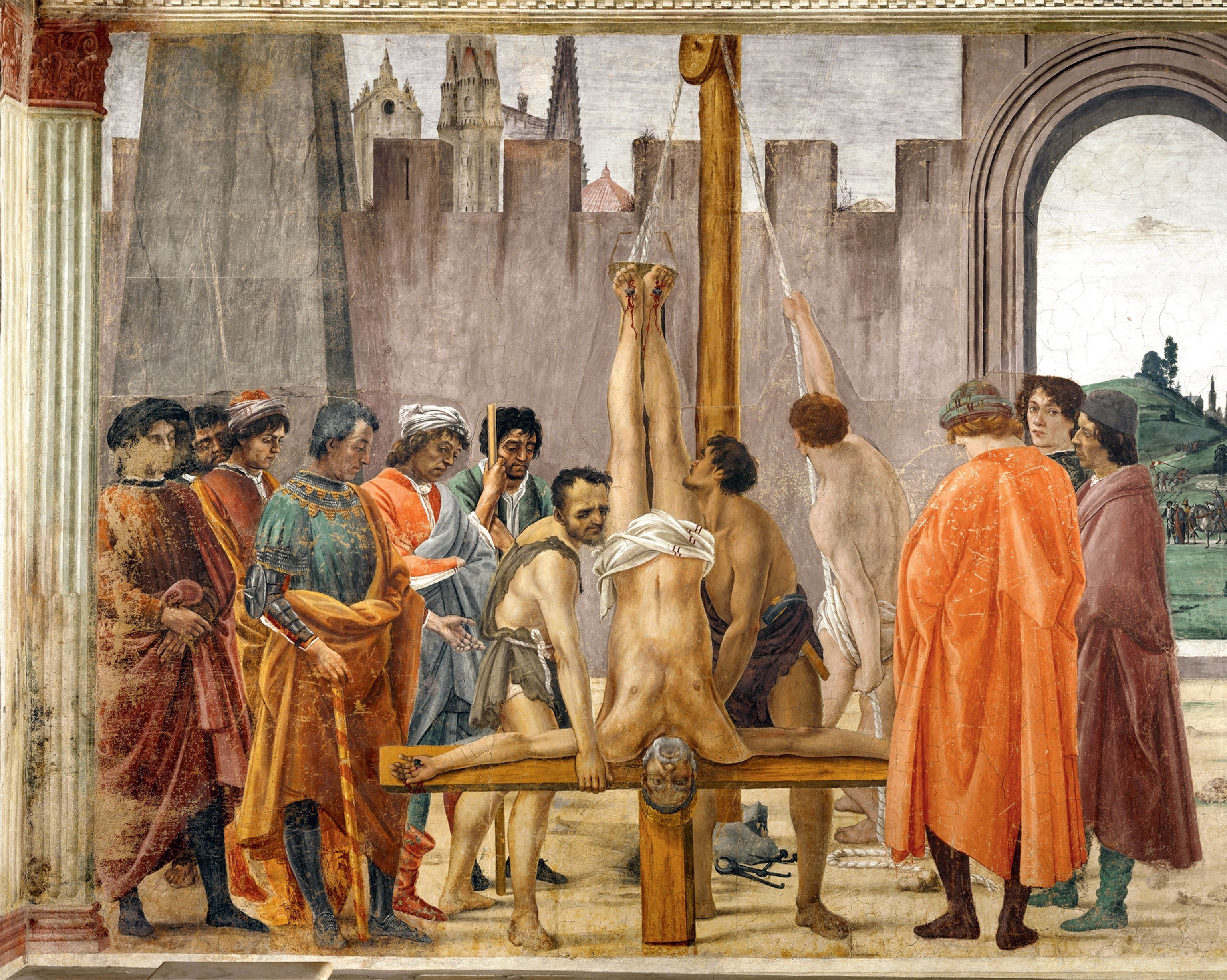
Veneration of the apostle
Although at first the tomb of Peter was probably a simple one and almost anonymous, the growth of the Christian community in Rome soon made it a focus for the faithful. In an effort to preserve the tomb, it was covered with new stone slabs as the ground level of the site rose. Then, in the mid-second century, a small commemorative monument was built on top. Something similar happened with the tomb of Paul, located, at least according to tradition, to the south of the city, in the necropolis of the Via Ostiense.

The earliest written reference to the funerary monuments of Peter and Paul dates to around the year 200, when Gaius, a presbyter, or bishop, of the Church of Rome, stated that the “trophies” of both apostles could be seen in Rome, one in the Vatican and the other on the Via Ostiense. The word “trophy” was used for tombs erected to Christian martyrs, since martyrdom was equated to a triumph of faith over death.
Interest in the tomb of St. Peter grew as it became widely accepted that the Church of Rome held primacy over all the other Christian churches. According to the Petrine theory developed in the second century, Peter had received from Jesus Christ himself the keys to the Kingdom of Heaven. So, having establishing himself in Rome as the first bishop of the city, Peter was believed to transmit to his successors the highest possible authority over the whole Christian community. Although not all the churches accepted this claim, it nonetheless added potency to Peter’s tomb.
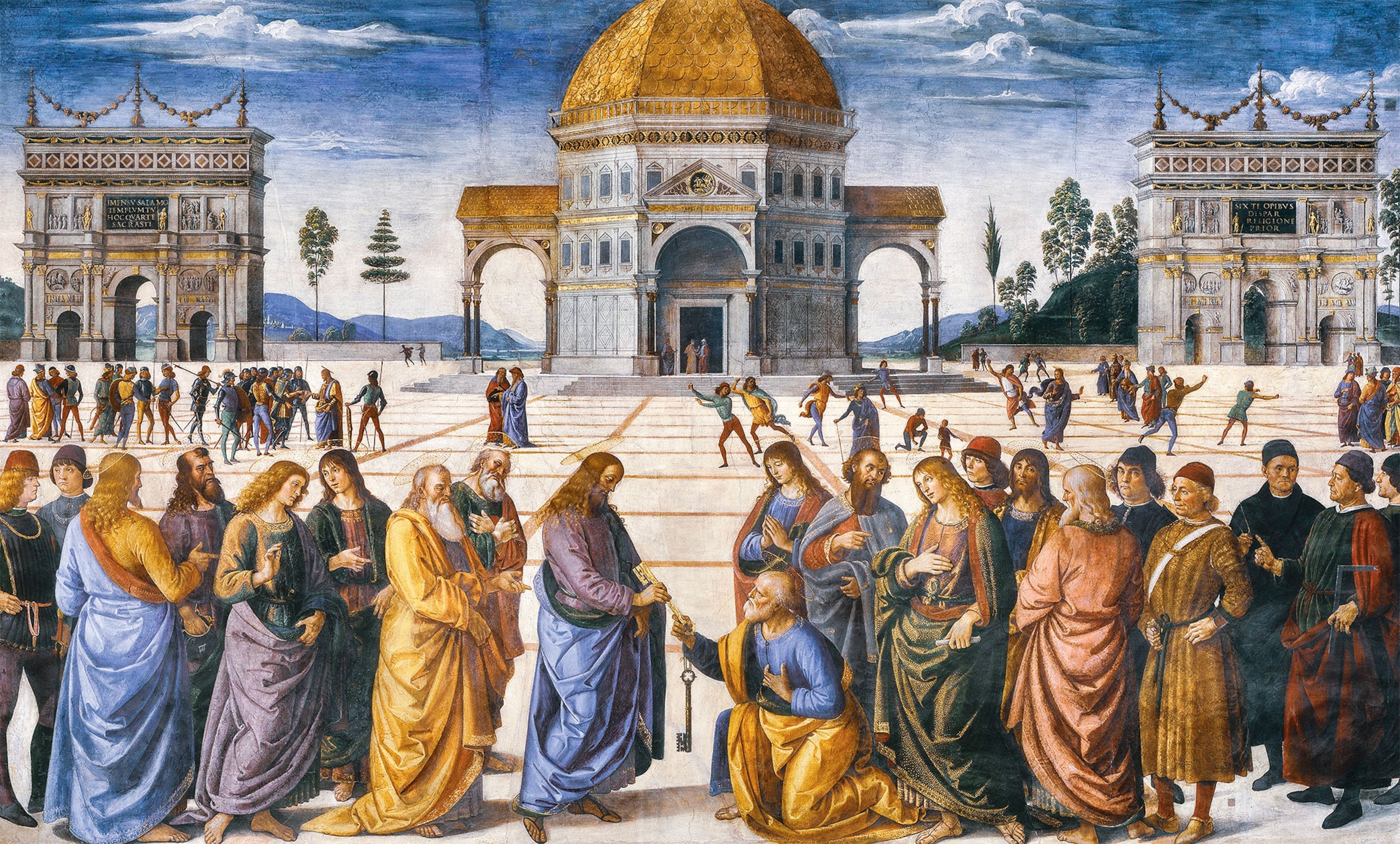
So when the emperor Constantine I (r. A.D. 306–337) ordered the construction of a great Christian basilica in Rome as part of his policy of promoting Christianity as the dominant religion of the empire, he chose the site of Peter’s tomb. Knowing that the new temple was built around the tomb of such an important figure in the Christian tradition would surely attract believers. Bishop Eusebius of Caesarea, in his text Theophany (A.D. 333), wrote that the apostle had been honored with “a splendid tomb before the city, a tomb to which innumerable hordes flock from every part of the Roman empire, as a great Shrine and temple of God.”
A colossal basilica
The decision to erect the basilica over the pre-existing tomb had enormous implications for the construction process. Since the Vatican was an area of uneven hilly terrain, a huge platform, nearly 800 feet long and almost 300 feet wide, was built on top of the ancient Vatican necropolis on the Via Cornelia to support the basilica. A huge volume of earth had to be removed in order to create the platform that reached a depth of some 30 feet. Despite the ambitious construction work, the surrounding necropolis couldn’t be destroyed as the tombs and mausoleums were protected by sacred law. So Constantine I ordered that instead of removing the tombs completely, the roofs should be taken off, their vaults broken, and the interior space filled with earth. The bones would remain buried under the new basilica.
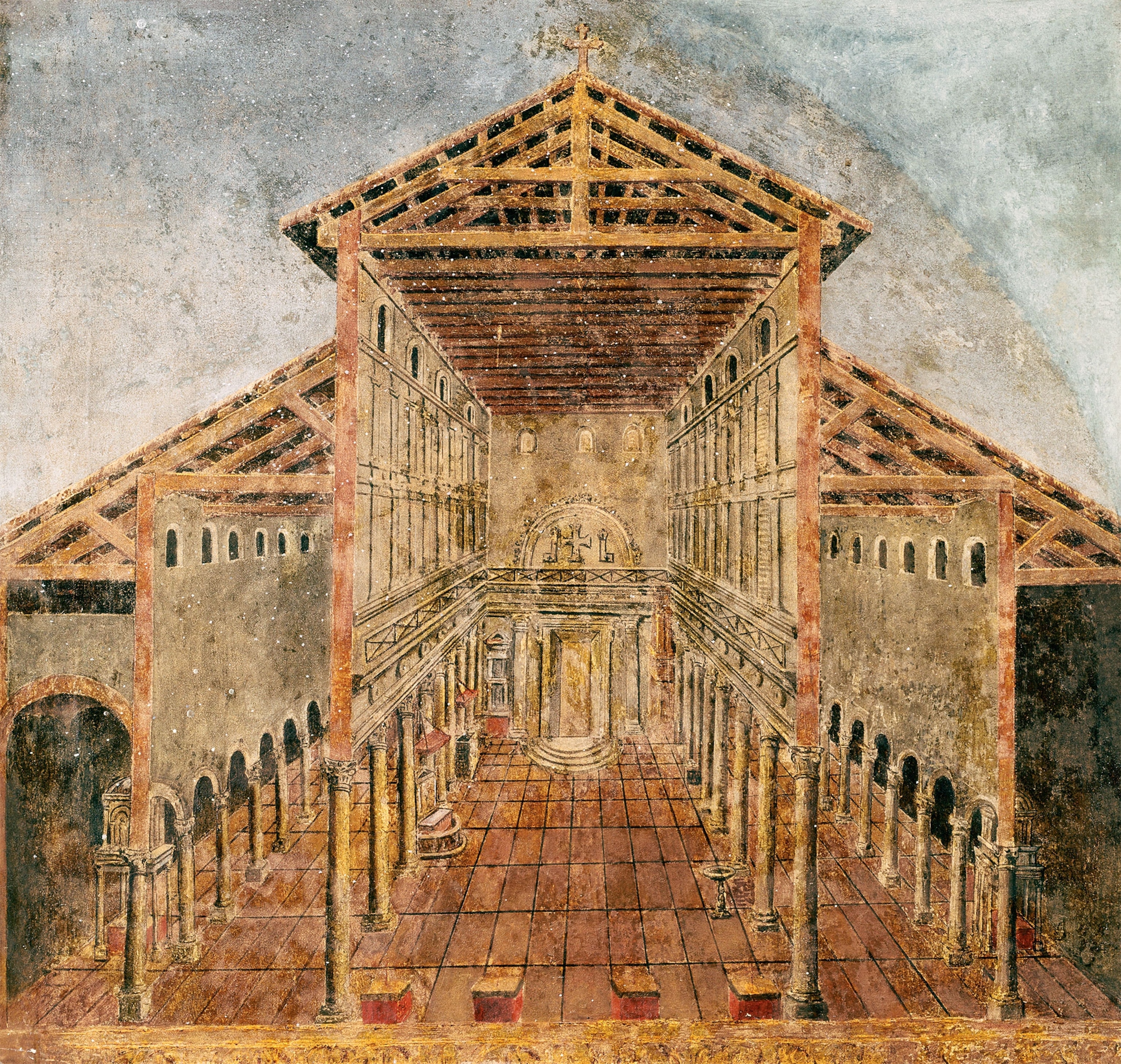
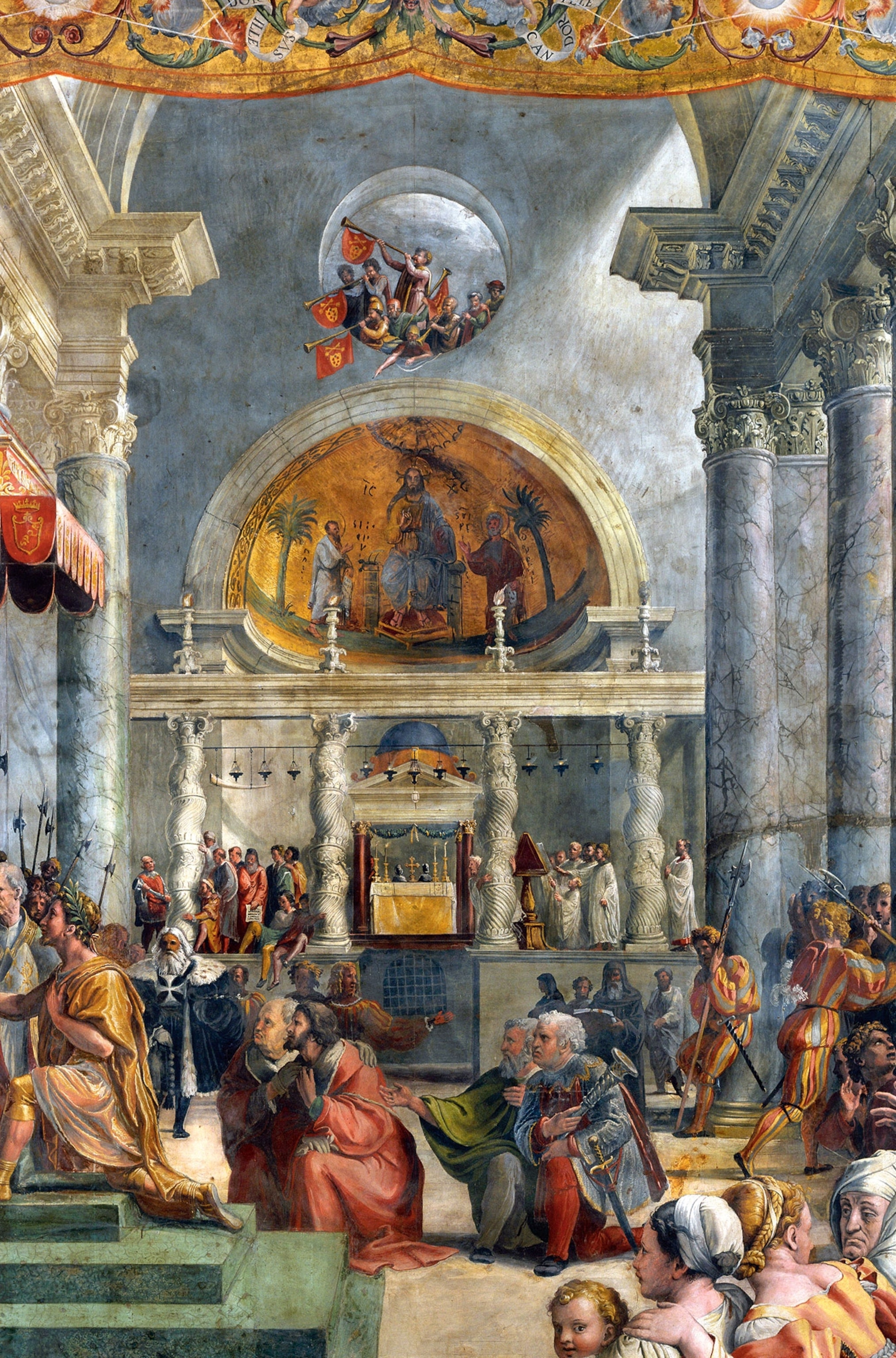
The building was constructed so that a monument, later known as the Trophy of Gaius, was built over the original tomb and located under the apse. Its site was marked inside the temple with a square marble structure covered by a ciborium with four Solomonic columns. But the Trophy itself was buried under the platform of the basilica. The Trophy and Peter’s tomb beneath it were further buried in the 16th century, when the old basilica was demolished and rebuilt to a Renaissance design.
The new Renaissance building was erected on a second platform, some 10 feet above the first, and supported by a system of vaults. These vaults created a space between the fourth-century basilica and the Renaissance one, the so-called Vatican Grottoes that were used as burial places for the popes. The bones of St. Peter, believed to be buried beneath, were left in peace at this point. In 1626, the remains of various tombs and burial mounds were disturbed unintentionally during work to put in place the bronze columns of the famous baldachin designed by sculptor and architect Gian Lorenzo Bernini. But Pope Urban VIII ordered the uncovering of the tombs to be kept quiet as the remains belonged to pagans who had been buried in the ancient necropolis.


The archaeologists arrive
It wasn’t until the 20th century that the oldest stratum of St. Peter’s Basilica finally came to light. In 1939, Pope Pius XII decided to open the Vatican Grottoes to the public. To make this practical, it was necessary to increase the height of the interior space by lowering the floor level of the original paving some two and a half feet. As soon as the workers began digging, they uncovered several Roman tombs belonging to the ancient Vatican necropolis. For the church, an archaeological investigation of these remains was a highly sensitive undertaking. It involved determining whether the tomb of St. Peter with his mortal remains inside really was under the altar of the basilica. This tradition, which had been so important to the identity of the Church of Rome, had been challenged by Protestants in the 16th century. Martin Luther wrote that according to sources in Rome, “it is unknown where in the city the bodies of Saint Peter and Paul are located, or even whether they are there at all. Even the Pope and the cardinals know very well that they do not know.”
A mystic versus the Vatican
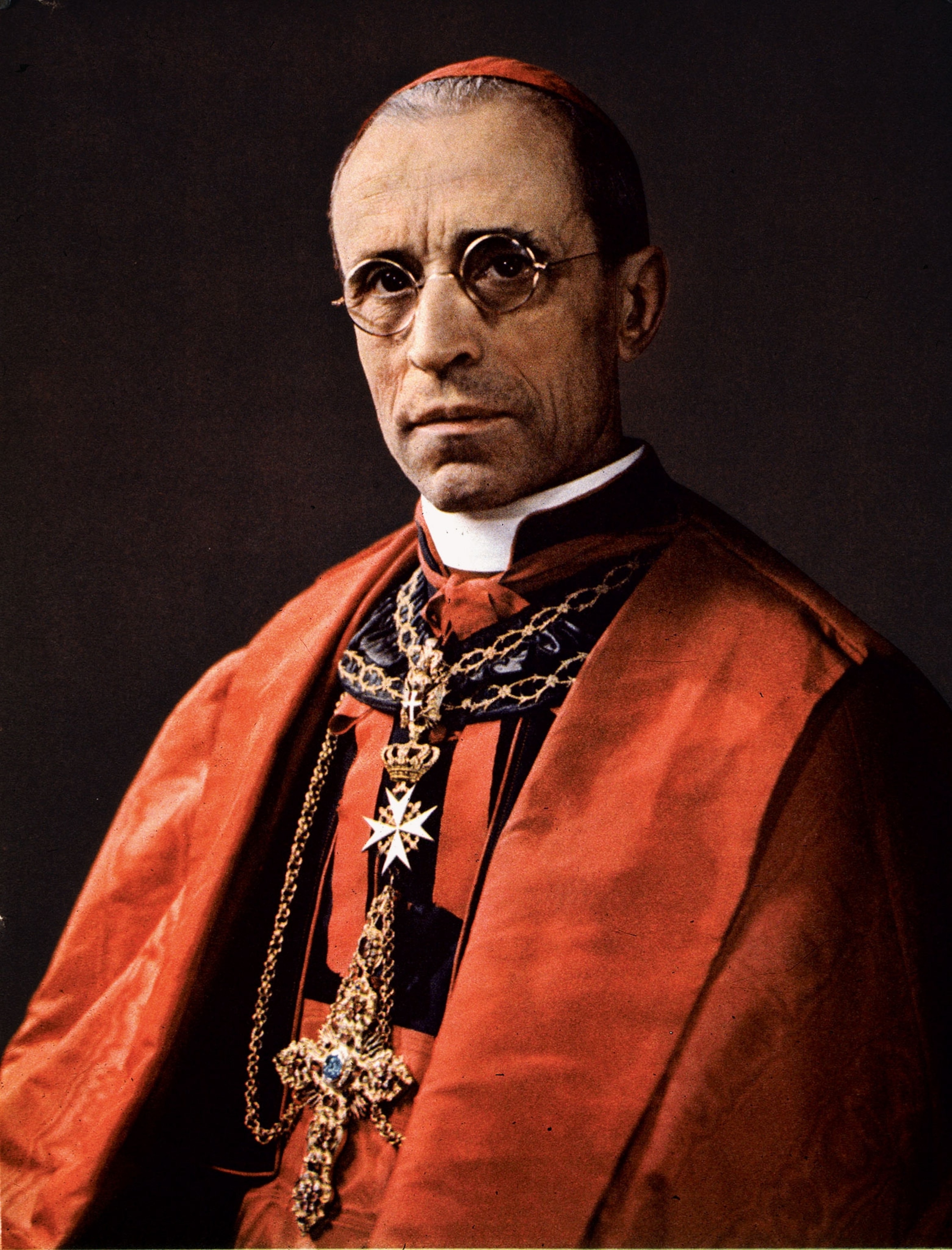
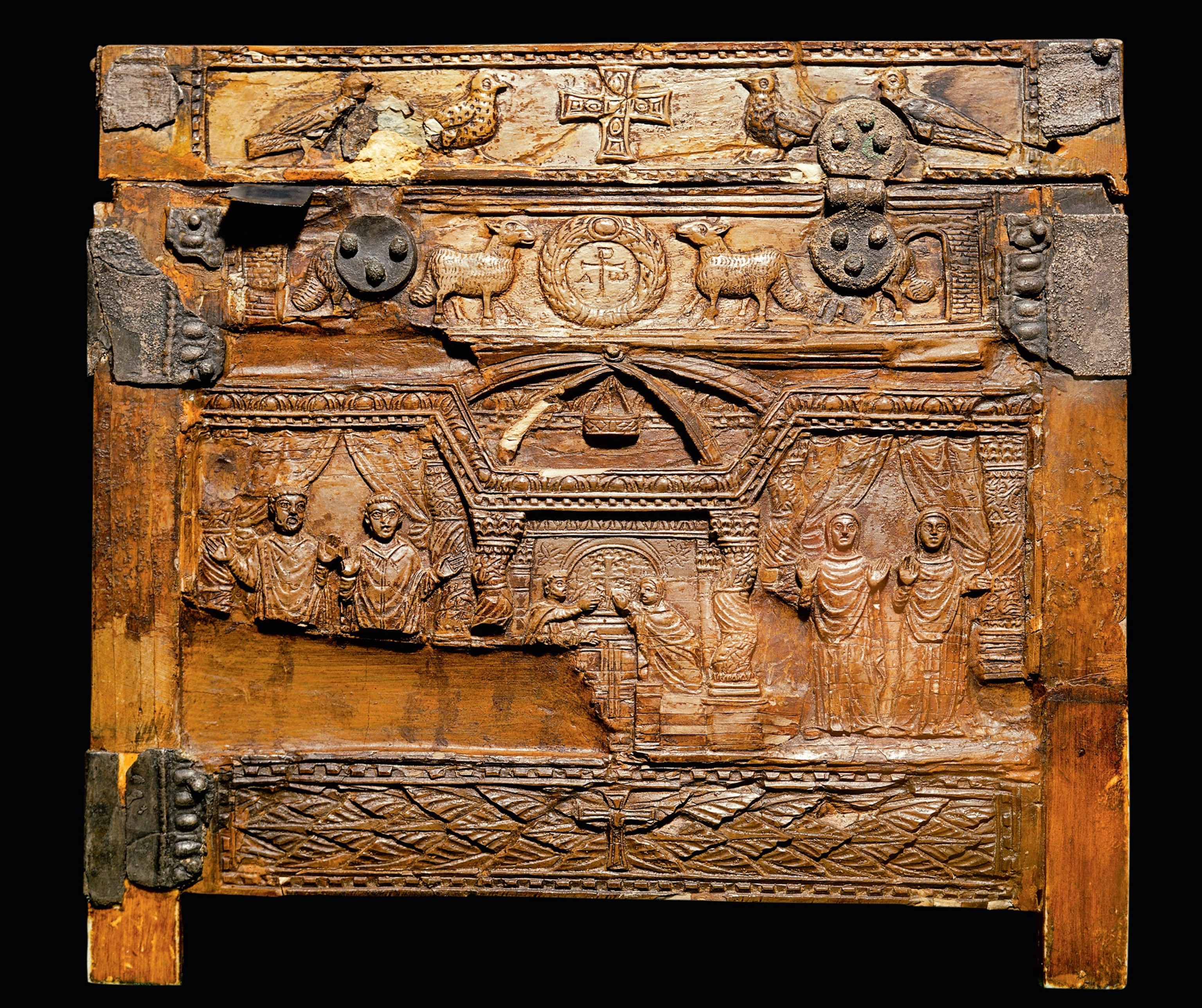
Despite the controversy, Pius XII commissioned a major archaeological investigation. The excavation, directed by the archaeologist Antonio Ferrua under the supervision of Monsignor Ludwig Kaas, lasted for more than a decade and made it possible to identify and restore 22 tombs belonging to the Roman necropolis of the Via Cornelia, adjacent to the Circus of Caligula. The tombs, having lain undisturbed and buried in the earth for centuries had been extremely well preserved, and their stuccos and paintings were found in an excellent state of repair.
A construction discovered exactly beneath the vertical axis of the altar in the basilica attracted the most attention. It was a structure with two niches, one above the other, attached to a red stuccoed wall. Archaeologists identified it as the Trophy of Gaius, the monument mentioned in the sources as having been built in the second century to mark Peter’s tomb. On December 23, 1950, in his Christmas radio address, Pius XII announced the discovery in unequivocal terms: “Has the tomb of St. Peter really been found? To that question, the answer is beyond all doubt: Yes. The tomb of the Prince of the Apostles has been found.”
(Age of Jesus Christ’s purported tomb revealed.)
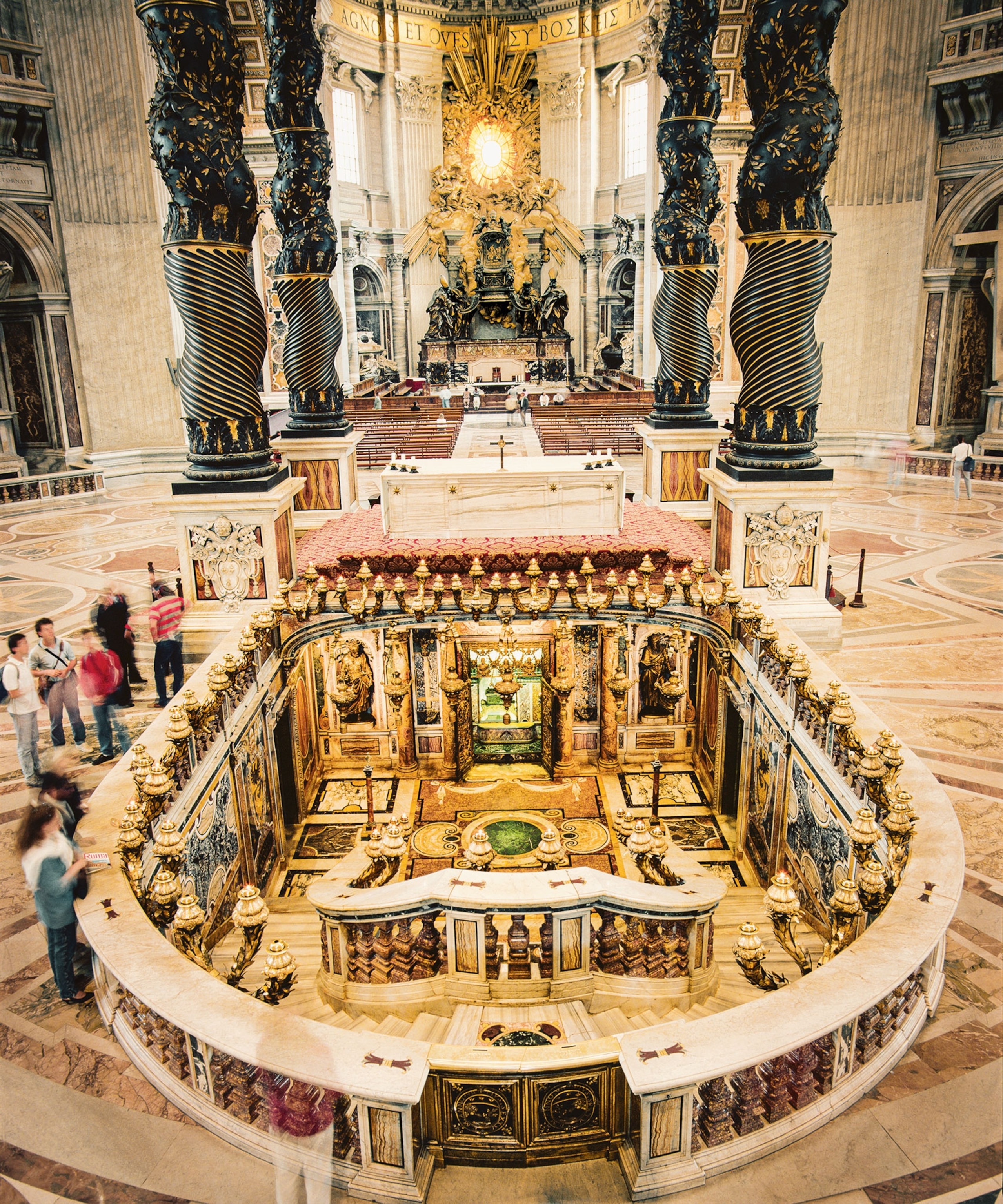
Papal announcements
The scientific reports on the excavation were more cautious, however. They described the discovery of a modest “venerated tomb,” which had been almost completely destroyed. Although Christian symbols and graffiti were found, they were hard to read and interpret. In any case, they seemed to date to the time of the Constantinian construction.
The excavation ordered by Pius XII had set its sights on finding the tomb of St. Peter and, even more important, his bones. Given the importance of the relics within the Catholic Church, being able to identify the mortal remains of Jesus’ right-hand man would have been an extraordinary event. While excavating under the two niches that formed the Trophy of Gaius, the archaeologists came across an underground cavity some three feet deep. If there were bones inside, surely there was a chance that they belonged to the apostle? But initially, all the archaeologists found was a large number of coins, probably left by pilgrims. During the excavation, some skeletal remains were uncovered but not inside the tomb. At the time, the bones didn’t arouse particular interest and so were removed and stored in a wooden box in the warehouse of the Vatican Grottoes.

In his radio address of December 1950, Pope Pius XII referred to these bones but stopped short of claiming they belonged to Peter: “At the side of the tomb, the remains of human bones have been found. However, it is impossible to prove with certainty that they belong to the body of the apostle. This still leaves intact the historical reality of the tomb itself.”
(The eighth wonder of the ancient world may have an untouched tomb.)
The subsequent investigation of those bones was driven by epigrapher Margherita Guarducci. She personally asked permission from the pope to undertake a study of all the graffiti associated with the Trophy of Gaius. The inscriptions, scribbled in charcoal or engraved with a stylus on the ruins of the monument, were concentrated on a wall that, as a buttress, had been built perpendicular to the red stucco wall of the Trophy of Gaius, to shore it up.
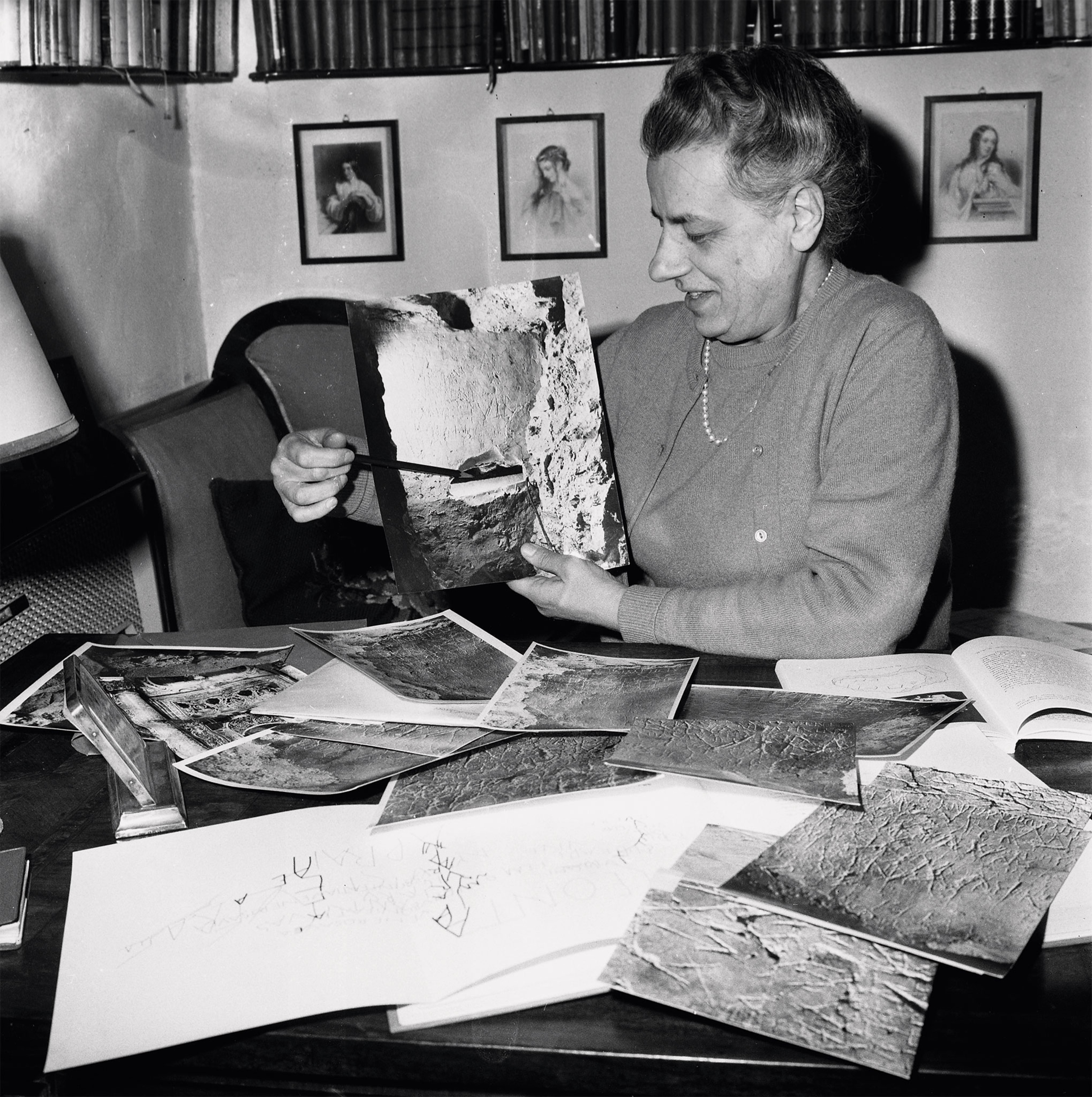
On this wall (known as wall G or the graffiti wall), Guarducci noticed a small loculus, or cavity, that had not been investigated. During their work in the grottoes, one of the excavation workers told Guarducci that this loculus in wall G was where the bones mentioned by the pope had originally been found. Guarducci managed to track down the bones within the warehouse and asked the pope if she could have them analyzed by a renowned forensic doctor. The results came back in 1963 and indicated that the skeletal remains all belonged to one man.
According to the analysis, he had been corpulent and had died at an advanced age, between 60 and 70 years old. The analysis also revealed traces of a wool fabric dyed purple and interwoven with gold. This suggested that the bones had been carefully wrapped before being placed in the loculus. The conclusion seemed obvious, at least to Guarducci: The bones belonged to St. Peter. Based on these results, in 1968, Pope Paul VI solemnly announced that the bones of the apostle had been found.
St. Peter: from necropolis to basilica
Here is Peter
During the excavations, Ferrua noticed a fragment of the graffiti wall had become detached, and on it he made out some Greek letters. Although the text was incomplete, the archaeologist restored it as PETROS ENI (Here is Peter). This was the first textual indication that the Trophy of Gaius was indeed Peter’s tomb. However, not all scholars agreed with Ferrua’s interpretation. For example, it’s possible to understand the opposite meaning from the inscription: PETROS ENDEI (Peter is not here).
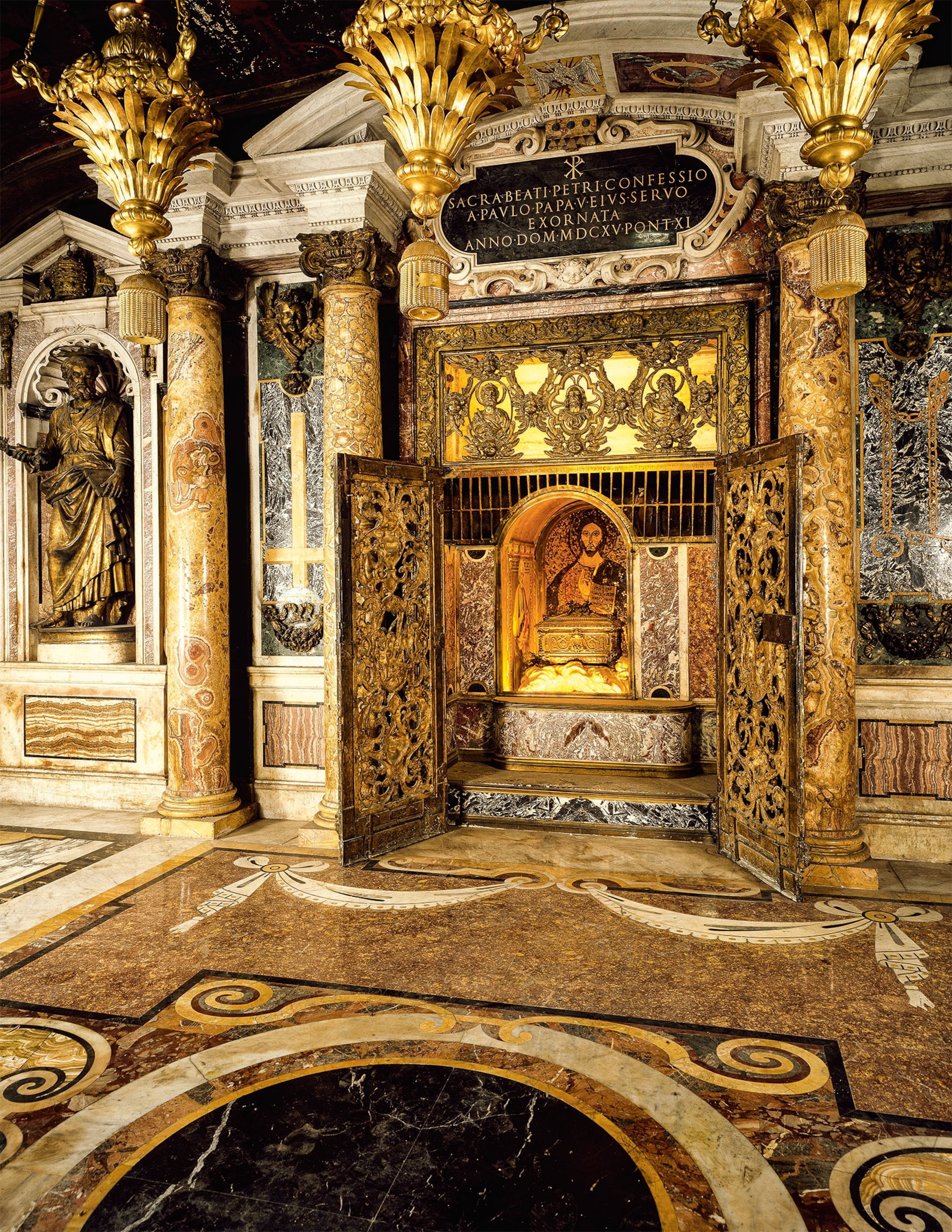
Guarducci later managed to decipher other graffiti on the wall and, after a long study, came to the conclusion that they were messages from faithful Christians, written in code at the time of the anti-Christian persecutions. She identified and interpreted about 20 symbols as references to St. Peter. Decades later, the identification of the bones and the interpretation of the graffiti are still hotly debated. Given that Peter was martyred somewhere in the area where a basilica was later consecrated to him, it seems logical that the Trophy of Gaius was built over a modest memorial for the apostle. Over the centuries, this special enclave of the Vatican necropolis has become a space of Christian veneration. What’s harder to be sure about is whether the bones discovered here truly belonged to Peter.
